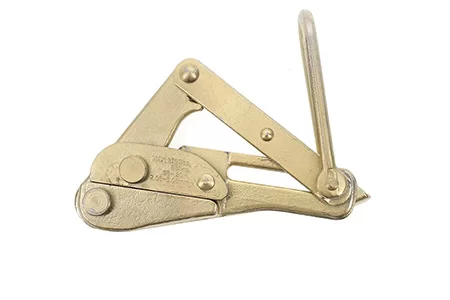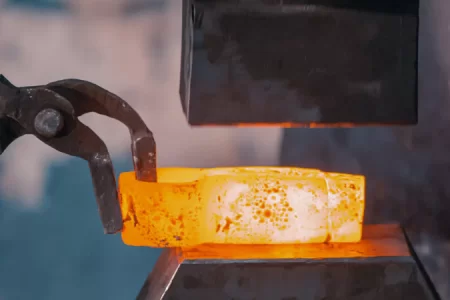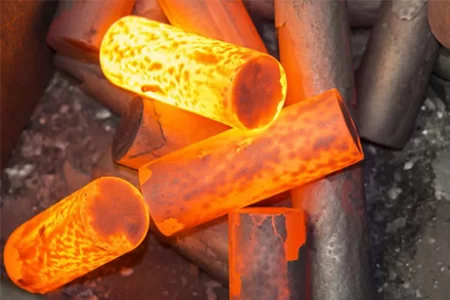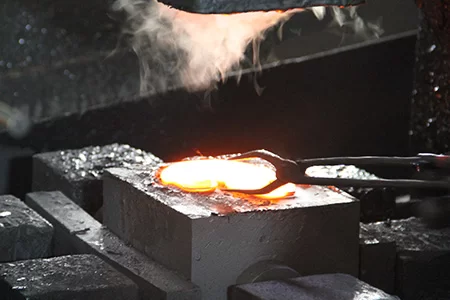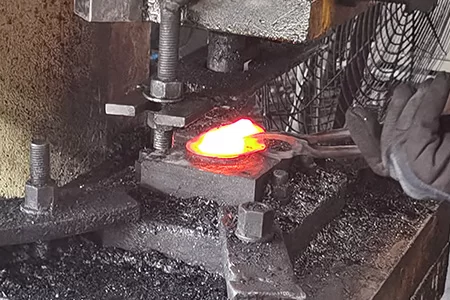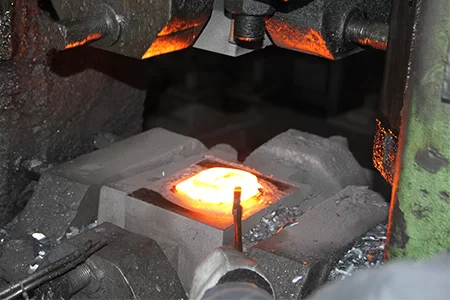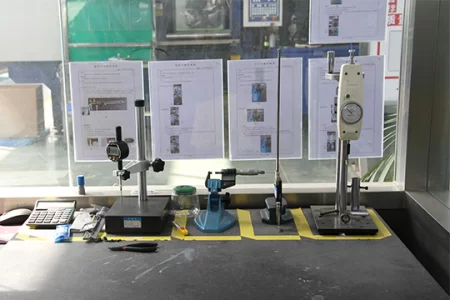By sharing knowledge, experience and views in the field of forging technology, we help you understand, learn and apply relevant technologies.

Hulk Metal Forging Technology
Share technical experience
-
Home>
-
Blog>
-
Technology>
Steel Forging vs. Steel Casting: Exploring the Differences

In the manufacturing industry, Steel Forging and Steel Casting are two key metal-forming processes, which are widely used in mining equipment, construction engineering, automobiles, and other fields. Although both can manufacture high-strength steel parts, there are significant differences in their farming methods, mechanical properties, production costs, and applicable scenarios. In order to help companies make more scientific decisions when choosing suitable manufacturing processes, this article will explore the definitions, process flows, advantages and disadvantages, and performance comparisons of steel forging and steel casting in depth, and finally introduce how HULK Metal provides customers with high-quality metal processing services through professional manufacturing capabilities.
Steel Forging
Definition
Steel forging is a manufacturing process that applies external force to make steel plastically deform in a solid state to obtain a specific shape and excellent mechanical properties. This process uses forging equipment (such as hammer forging, die forging, hydraulic forging, etc.) to process steel to make its internal grain structure denser, reduce pores and defects in the material, and thus improve the strength, toughness and fatigue resistance of the final product.
Process Flow
Steel forging usually includes the following key steps:
1. Billet preparation: Select suitable steel billets, such as round steel or steel plates, and make preliminary cuts.
2. Heating: Heat the billet to the recrystallization temperature (usually between 900-1250℃) to reduce the deformation resistance of the metal and improve plasticity.
3. Forging: Use free forging, die forging or precision forging processes to plastically deform the metal by applying pressure to form the desired shape.
4. Annealing or normalizing: Improve the internal structure, reduce residual stress, and improve material stability through heat treatment.
5. Machining: For parts with high precision requirements, subsequent machining is performed to obtain the final size.
Advantages
The main advantages of steel forging include:
·Excellent mechanical properties: Due to the optimized grain structure, steel forgings have higher strength, toughness, and fatigue resistance, and are suitable for parts subject to higher loads.
·High material density: The forging process reduces defects such as pores and shrinkage holes in the material, making the internal structure of the parts more uniform.
·Good ductility: Forged steel has good plastic deformation ability and is not easy to break during use.
·Can adapt to high temperature and high-pressure environments: Especially suitable for industrial application scenarios that require high-temperature resistance and corrosion resistance.
Disadvantages
Despite the many advantages of steel forging, there are also some limitations:
·It is difficult to manufacture parts with complex shapes: For parts that require internal cavities or precise details, the applicability of the forging process is low.
·High cost: Compared with casting, forging requires a higher initial equipment investment and a higher material utilization rate.
·Limited size: Free forging is suitable for larger parts, but forging is more difficult for very large parts (such as some ship parts).
Steel Casting
Definition
Steel Casting is a process in which molten steel is poured into a mold and cooled to obtain the desired shape. This process allows steel parts to be manufactured with complex geometries while retaining the excellent strength and wear resistance of castings. Steel casting is widely used in industries such as construction, heavy equipment, and machine tools.
Process Flow
Steel casting usually includes the following steps:
1. Mold making: Make sand molds, metal molds, or ceramic molds according to the part design.
2. Metal smelting: Heat the steel to a molten state and adjust the chemical composition.
3. Pouring: Pour the molten steel into a pre-designed mold to fill all cavities.
4. Solidification and cooling: The molten steel cools and solidifies in the mold to form a preliminary part.
5. Demolding and cleaning: Remove sand or oxides from the surface of the casting and perform necessary finishing treatments.
6. Heat treatment: Anneal, quench, or normalize as needed to optimize mechanical properties.
Advantages
The advantages of steel casting include:
· Complex shape parts can be manufactured: Compared with forging, casting can produce more complex structural parts, which is suitable for the manufacture of precision equipment parts.
· High material utilization: The casting process can reduce material waste and improve the overall economy.
· Suitable for large-size parts: The casting process can produce super-large parts while forging is subject to certain size restrictions.
· Lower production costs: For mass production, casting has more cost advantages than forging.
Disadvantages
·Relatively low mechanical properties: Castings are usually lower in strength and toughness than forgings, and are prone to cracks when subjected to high-impact loads.
· Casting defects may exist: such as pores, inclusions, shrinkage holes, and other defects, which require subsequent processing or repair.
· Long manufacturing cycle: Due to the involvement of mold design, casting and post-processing, the overall production cycle is relatively long.
Performance comparison between steel forging and steel casting
Mechanical properties
From the perspective of strength, toughness, fatigue performance, etc., steel forgings are generally better than steel castings. The forging process improves the grain structure of the material, making it more impact-resistant and fatigue-resistant, while the overall performance of castings is relatively low due to the grain growth and pores during the cooling process.
Organizational Structure
Forged parts have denser internal structures, finer grains, and fewer defects, while cast parts are prone to segregation, shrinkage, inclusions, and other problems, which need to be improved through subsequent processing.
How to choose the right process
When choosing steel forging or steel casting, companies should consider the following factors:
· Part shape: If the part shape is more complex or has an internal cavity, casting is a better choice; if the part requires high strength, forging is recommended.
· Mechanical performance requirements: High-strength and high-toughness parts (such as aviation and automotive parts) are more suitable for forging; parts with high wear resistance requirements but moderate strength (such as pump housings and valve bodies) are suitable for casting.
· Production cost: Casting is suitable for mass production and has a lower cost; although forging has a higher cost, the part performance is superior.
Why choose HULK Metal
HULK Metal is a professional metal processing company that provides high-quality steel forging and steel casting solutions with the following advantages:
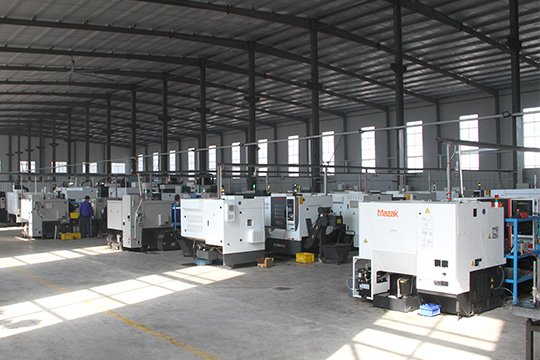
· Advanced production equipment: Equipped with 3-axis, 4-axis, 5-axis milling centers and advanced CNC lathes.
·Strict quality control: ISO 9001 certified, tested with international standards such as CE, TUV, SGS, etc.
·Rich experience: Provide customized parts to global customers to meet different application requirements.
·Efficient logistics support: Cooperate with international logistics companies to ensure fast delivery of products.
Steel forging and steel casting each have their own advantages, and companies should choose the appropriate process according to specific needs. HULK Metal is a trustworthy partner that provides customers with high-performance steel manufacturing solutions with advanced technology and strict quality control.
Article Navigation
Article Navigation
Industries
Foundries
-

December.11, 2024
Analysis of the characteristics and main uses of wire grip for conductor
READ MORE
-

July.01, 2024
Difference between hot forging and cold forging
READ MORE
-

June.27, 2024
What are the advantages and disadvantages of the hot forging process?
READ MORE
-

February.28, 2025
Open Die Forging: Exploring the forging process and the key factors in selecting a OEM
READ MORE
-

February.24, 2025
Key Considerations for Closed Die Forging
READ MORE
-

February.18, 2025
Factors to consider when purchasing custom forgings
READ MORE
-

February.14, 2025
HULK Metal's hot forging quality control
READ MORE



